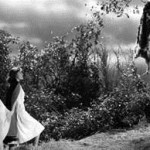Please join us for the next seminar in the Centre for Transnational Studies/ILC seminar series: ‘Now you see it, now you don’t!’ It features two compelling speakers from Birkbeck, University of London: Dr Andrew Asibong and Dr Silke Arnold-de Simine.
Wednesday, 19th November 2014
5.00pm-7.00pm Venue: 65/1177

Dr Andrew Asibong
(Birkbeck, University of London)
‘Nothing to See: Affliction, Denial and the Moving Image’
“These crimes that have no psychic place of inscription because they were not represented in either thought or speech produce, several generations later, talking birds with an unnatural voice and an unbearable rhythm.” Philippe Refaber
Psychoanalytic psychotherapy has been grappling for quite a few decades now with what I term as the *concrete problem of a ghostly internal parent*. In this presentation, which takes films rather than humans as its primary object of study, I want to suggest that the psychic worlds of many film characters as well as their afflicted spectators are pervaded by ‘dead zones’ of blankness and representational impoverishment. These ‘dead zones’ may, however, to some degree, and under certain cultural circumstances, be offered care, resuscitation and partial resurrection through exposure to fantastically new filmic objects of revelation. Exploring differently horrific, family-centred film melodramas, I consider what a narrative and spectatorial shift from deadened disavowal to alive recognition might look like, and the extent to which the ‘new filmic object’ (both intra- and extra-diegetic) may itself need to embody a certain kind of ‘dead-alive’ spectrality in order to function as a properly transformational facilitator of change.
Dr Silke Arnold-de Simine
(Birkbeck, University of London)
‘The Ruin as Memorial – the Memorial as Ruin’
The link between the ruin and the monumental, the sublime and overwhelming can be traced back to the eighteenth century and the etchings of Giovanni Battista Piranesi. However, this paper is less interested in the monumental ruin or the ruin as monument but looks at what kind of roles ruins perform in commemorative cultures. This encompasses memorials in which poignant remains have been preserved and turned into reminders of violent acts as well as memorials in which the iconographic traditions of the ruin are consciously reproduced for remembrance purposes. How far are these ruins removed from the mock-Gothic follies and crumbling classical temples of English landscape gardens? Has the ‘ruin tourism’ of the 18th century turned into the ‘dark tourism’ of the 21st century? Are the memorial ruins conceived differently, depending on if they commemorate gradual decay and mortality, a natural catastrophe or human violence? In what ways is the iconography or the ruin used to aestheticize these catastrophes and what is its effect?
All Welcome!
Posted By : Lisa Bernasek